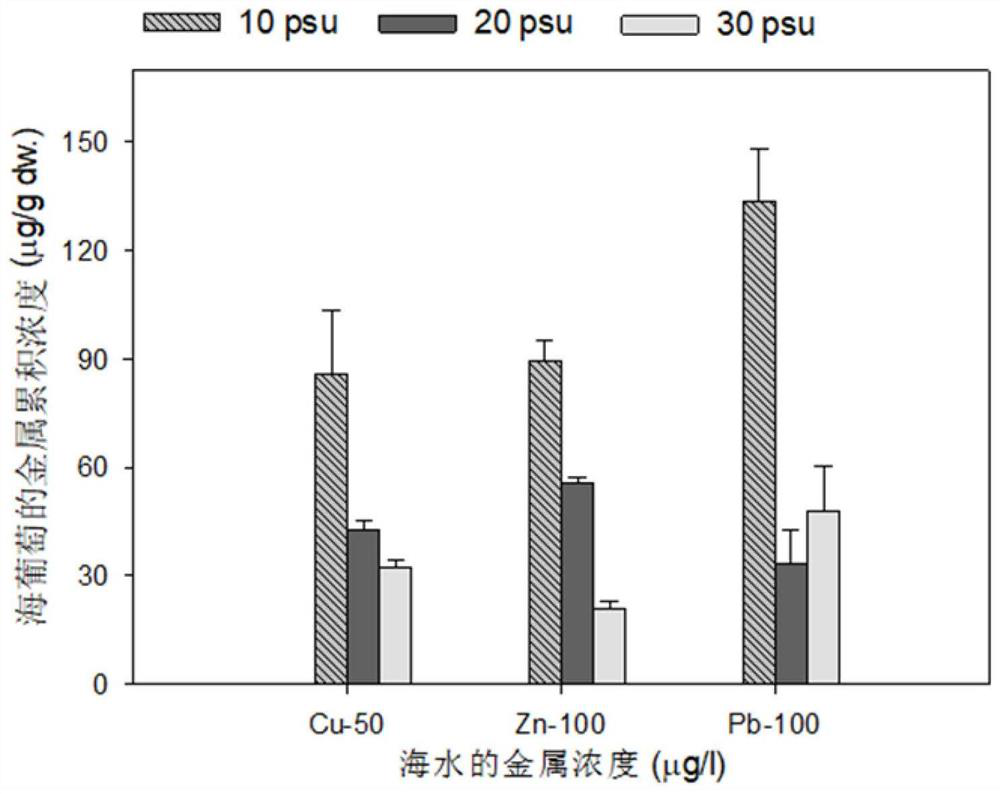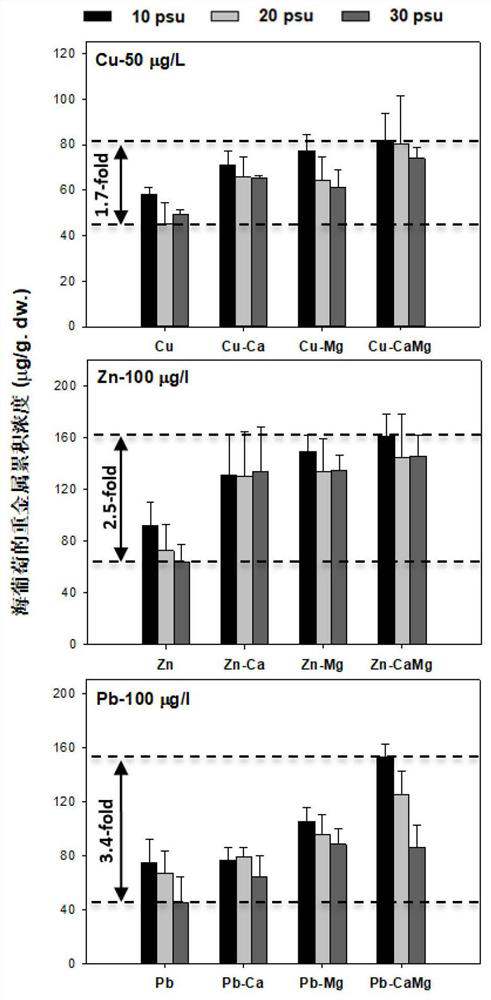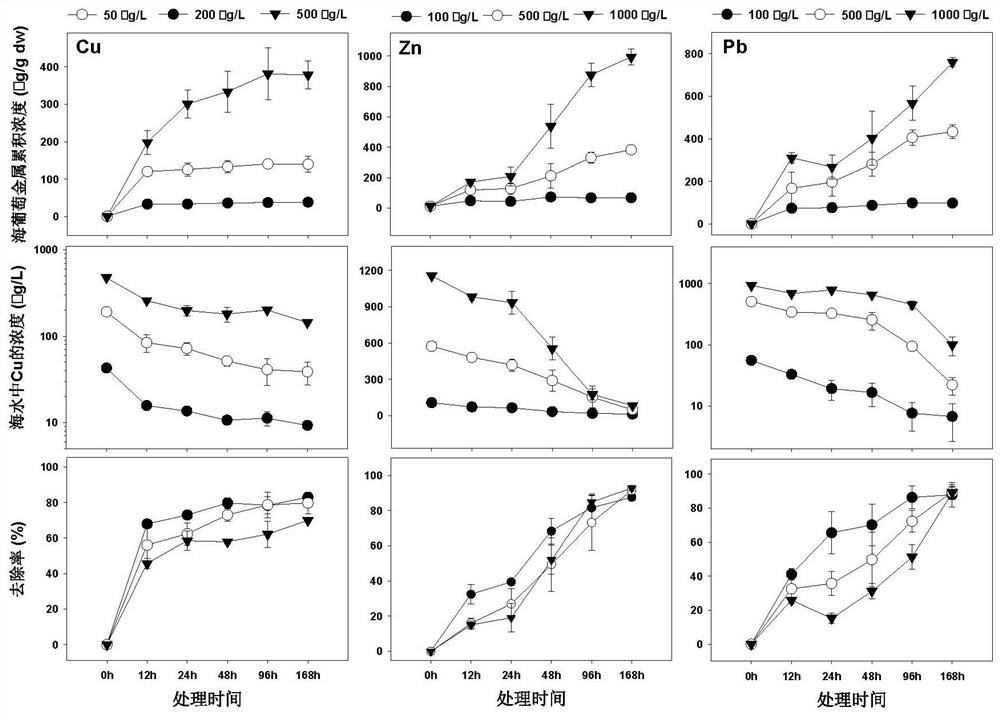Optimized treatment method for removing heavy metals in seawater based on salinity and ion regulation
A treatment method and technology for heavy metals, applied in the field of environmental biotechnology applications, can solve problems such as limited application and difficult collection, and achieve the effects of improving removal efficiency, easy treatment, and improving absorption capacity and enrichment level.
- Summary
- Abstract
- Description
- Claims
- Application Information
AI Technical Summary
Problems solved by technology
Method used
Image
Examples
Embodiment Construction
[0025] The application will be further described below in conjunction with the accompanying drawings.
[0026] The optimal treatment method for removing heavy metals from seawater based on salinity and ion regulation is to put macroalgae into the heavy metal-polluted water body to be treated, and use the cell wall structure of macroalgae to contain a large number of active groups. Seaweed cells are mainly composed of polysaccharides, Composed of proteins and lipids, these components contain a large number of groups that can be combined with metal ions, and there is strong electrostatic adsorption and complexation coordination with metal ions, and the adsorption capacity for metal ions is strong, and through The ion channels and transporter carriers on the membrane transport the heavy metal ions adsorbed on the cell surface into the algae cells to achieve the purpose of removing heavy metal ions in the water.
[0027] The large seaweed adopted in the present application is the ...
PUM
 Login to View More
Login to View More Abstract
Description
Claims
Application Information
 Login to View More
Login to View More - R&D
- Intellectual Property
- Life Sciences
- Materials
- Tech Scout
- Unparalleled Data Quality
- Higher Quality Content
- 60% Fewer Hallucinations
Browse by: Latest US Patents, China's latest patents, Technical Efficacy Thesaurus, Application Domain, Technology Topic, Popular Technical Reports.
© 2025 PatSnap. All rights reserved.Legal|Privacy policy|Modern Slavery Act Transparency Statement|Sitemap|About US| Contact US: help@patsnap.com



